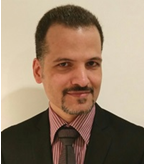That is the question
SERIES ARTICLE
Risk Doctor Briefing
Rasoul Abdolmohammadi, PMP, PMI-RMP
The Risk Doctor Partnership
IRAN
Many organizations seek to use risk management to create added value, but their risk processes often have weaknesses or faults which affect the outcome. Some of them are not aware of these weaknesses, while others know very well what they are. A Persian proverb says, “The person who doesn’t know, and doesn’t know that he doesn’t know, will be ignorant forever”. It is clearly better to know our process weaknesses than not to know them, but how can we tackle our lack of knowledge? Here are three steps:
- Where is our process weak? The first step in tackling hidden faults is to find them. How can we find unknowns? French philosopher René Descartes recommended being skeptical about everything, which involves the following actions:
-
- Analyze outcomes. Find areas in which expected targets have not been met, then explore whether there are root causes hiding in our processes that are leading to problems in performance. We may also find hidden opportunities in our processes that could improve outcomes.
- Revalidate infrastructures. Take a fresh look at processes, resourcing, software tools, reporting and other elements of supporting infrastructure, seeking bottlenecks or areas where improvements are possible.
- Can we tackle the weakness? When we find a fault, we need to know whether our organization has the necessary resources to deal with it. The following questions can help us decide whether we can effectively respond to process weaknesses that we’ve discovered:
-
- Reliable Inputs. Are we currently providing reliable and precise inputs to the risk process? Can we significantly improve the quality of these inputs? Invalid inputs won’t help and might even hinder performance. For instance, if we want to move from qualitative risk assessment to using quantitative schedule risk analysis, we will need a reliable baseline project schedule. Without a suitable schedule, introducing quantitative risk analysis won’t improve the process and might even reduce the level of accuracy available from qualitative assessment.
- Level of Precision. Can precision be improved cost-effectively? Is it worth it? How much precision do we need in order to make good risk-based decisions? For example, if we can predict risk exposure to the nearest $1K but our decision processes are working with precision levels of $100K, the additional precision is not helpful.
More…
To read entire article, click here
How to cite this paper: Abdolmohammadi, R. (2021). To Know or Not to Know? That is the question, Risk Doctor Briefing; PM World Journal, Volume X, Issue II, February. Available online at https://pmworldlibrary.net/wp-content/uploads/2021/02/pmwj102-Feb2021-Abdolmohammadi-to-know-or-not-to-know.pdf
About the Author

Rasoul Abdolmohammadi
IRAN
![]()
Rasoul Abdolmohammadi is an industrial engineer with more than 20 years project management experience including risk, time and cost management. He currently works as technical principal in planning and scheduling in Petronas. His risk experience includes developing, implementing and training project risk processes for a range of international mega-projects in the oil & gas and construction industries, including quantitative risk analysis. Rasoul has published his experiences in the book “Practical Project Risk Management Process“, and he has presented on risk at international conferences.
He can be contacted at rasoulabdolmohammadi@yahoo.com









